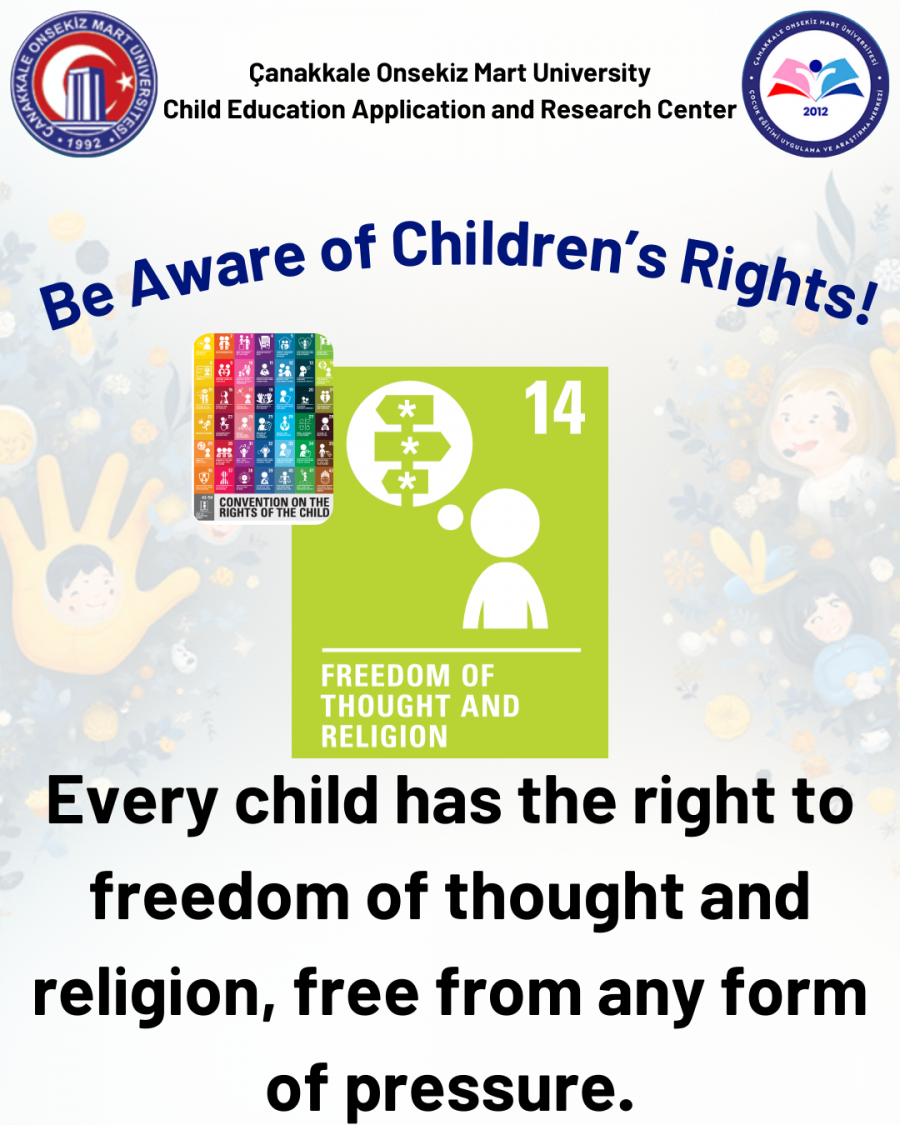


Article 14 of the Convention on the Rights of the Child guarantees every child the right to form their own thoughts, conscience, and beliefs freely. This right encompasses not only the freedom to believe or not believe in a religion, but also the child’s ability to shape personal values, develop ways of understanding the world, and construct their own identity. Under international human rights law, a child’s inner world, what they choose to believe or not believe, is absolutely protected, and no form of pressure or coercion is permissible. The external expression or practice of a belief, however, may be limited only to protect public order, health, or the rights of others. These distinctions are supported by legal and scholarly discussions that emphasize the difference between the “forum internum” and “forum externum” dimensions of freedom of thought and religion (Baroness Hale of Richmond).
Research shows that children are influenced by their families in both scientific and religious matters, yet as they grow older, they increasingly develop independent thinking skills. Cross-cultural studies highlight the balance between parental influence and the child’s developing autonomy (McLoughlin et al., 2021). Therefore, Article 14 does not exclude parental guidance; rather, it underlines that the final decision and the process of forming beliefs ultimately belong to the child. Imposing any belief or worldview on a child is considered a violation of mental integrity. In some high court assessments, such intrusion has been regarded as severe as physical harm (Baroness Hale of Richmond).
Schools are the most commonly discussed setting for freedom of thought and religion. International law and the judgments of the European Court of Human Rights clearly state that education must be neutral, pluralistic, and objective; no child may be compelled to adopt a particular belief, and all beliefs must be treated with respect (Relaño, 2010). One-sided instruction in compulsory religious courses can infringe upon children’s and families’ rights. The school environment is also where children develop their sense of identity, express themselves, and encounter cultural diversity, making neutrality in teaching essential to democratic societies.
Non-discrimination is a central component of Article 14. Children from immigrant or minority religious backgrounds may experience higher levels of discrimination at school, a pattern observed particularly among Muslim-background students (Soehl, 2019). This indicates that Article 14 functions not only as a freedom right but also as a protective one. All children, regardless of their belief or non-belief, must be safeguarded against discrimination.
A child’s belief and thought development is influenced by cultural, social, and educational contexts. Cross-cultural psychological studies show that children’s attitudes toward different beliefs are strongly shaped by age, environment, and adult guidance (Verkuyten & Killen, 2021). These findings demonstrate that Article 14 is not only an individual liberty but also a foundational element of peaceful coexistence. Unaccompanied, displaced, or crisis-affected children are particularly vulnerable in maintaining their identity and beliefs. International research highlights the importance of meeting both the psychological and spiritual needs of these children (Freixa Niella et al., 2025). In this regard, Article 14 provides essential protection for children at risk.
In conclusion, Article 14 is fundamental to a child’s ability to shape their inner world freely. It requires families and states to respect the child’s autonomy, ensure neutrality within educational settings, prohibit discrimination based on belief or non-belief, and support the child’s safe and healthy identity development. Every child has the right to form their own thoughts and beliefs without pressure or coercion—an essential principle for any free and democratic society.
References
Baroness Hale of Richmond. (2017). Freedom of religion and freedom from religion. Ecclesiastical Law Society, 19, 3-13. https://doi.org/10.1017/S0956618X16001058
Freixa Niella, M., Ruiz Garzón, F., Sánchez-Martí, A., & Vilà Baños, R. (2025). Challenges of Religious and Cultural Diversity in the Child Protection System with Children Migrating “Alone” in Catalonia and Melilla. Religions, 16(2), 109. https://doi.org/10.3390/rel16020109
Grüll, C. & Wilson, E. K. (2018)Universal or Particular … or Both? The Right to Freedom of Religion or Belief in Cross-Cultural Perspective. The Review of Faith & International Affairs, 16(4), 88-101. https://doi.org/10.1080/15570274.2018.1535046
Jensen, L. A. (2021). The cultural psychology of religiosity, spirituality, and secularism in adolescence. Adolescent Research Review, 6(3), 277-288. https://doi.org/10.1007/s40894-020-00143-0
McLoughlin, N., Davoodi, T., Cui, Y. K., Clegg, J. M., Harris, P. L., & Corriveau, K. H. (2021). Parents’ beliefs about their influence on children’s scientific and religious views: Perspectives from Iran, China and the United States. Journal of Cognition and Culture, 21(1-2), 49-75. https://doi.org/10.1163/15685373-12340096
Relaño, E. (2010). Educational pluralism and freedom of religion: Recent decisions of the European Court of Human Rights. British Journal of Religious Education, 32(1), 19-29. https://doi.org/10.1080/01416200903332049
Martin Scheinin (2000) Freedom of Thought, Conscience and Religion. Studia Theologica, 54(1), 5-18. https://doi.org/10.1080/003933800750041485
Schanda, B. (2023). The freedom of religion of children. European Integration Studies, 19(1). https://doi.org/10.46941/2023.e1.11
Soehl, T. (2020). Mode of difference and resource for resilience: How religion shapes experiences of discrimination of the second generation in France. International Migration Review, 54(3), 796-819. https://doi.org/10.1177/0197918319882628
Verkuyten, M., & Killen, M. (2021). Tolerance, dissenting beliefs, and cultural diversity. Child Development Perspectives, 15(1), 51-56. https://doi.org/10.1111/cdep.12399
Dr. Sezen ÇİÇEK APAYDIN
November 22, 2025